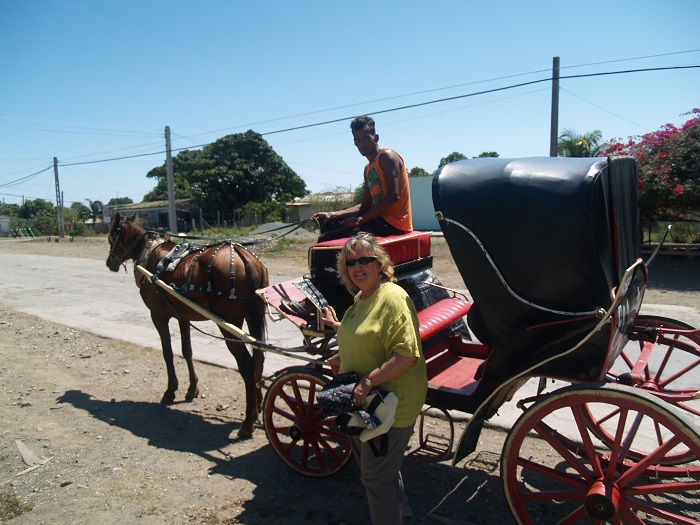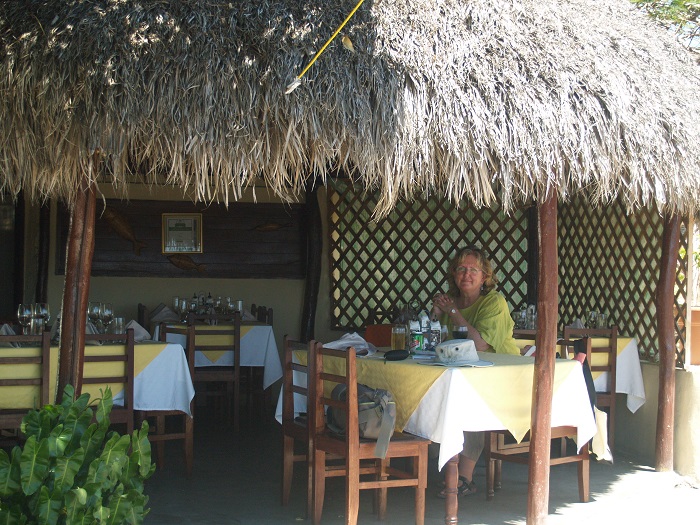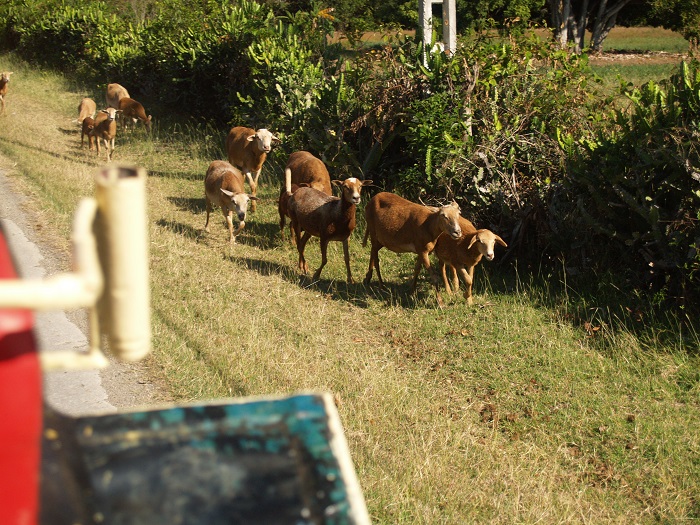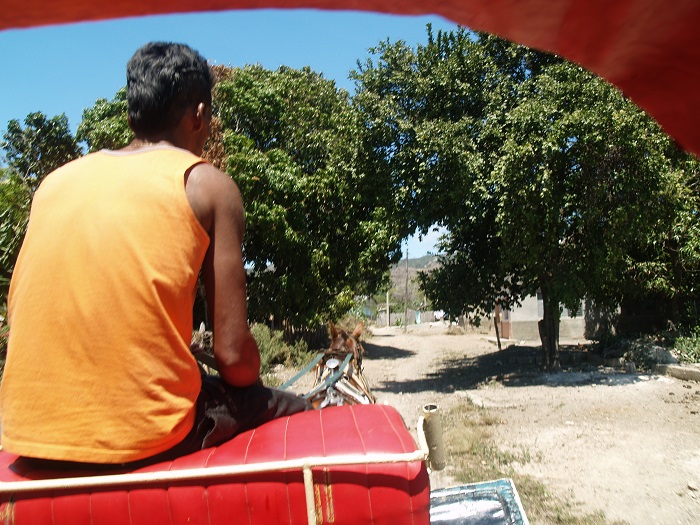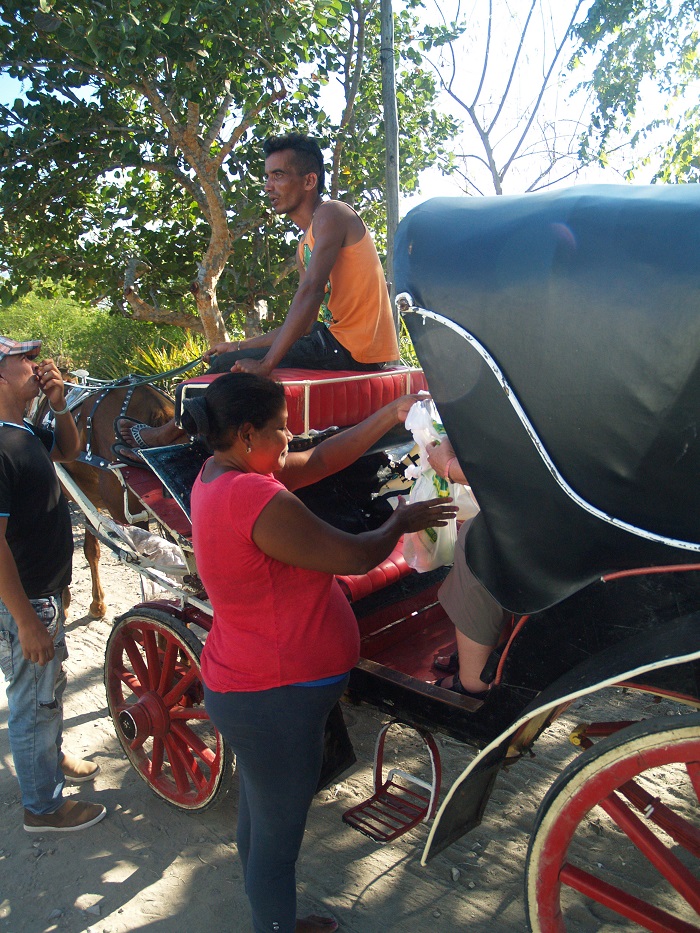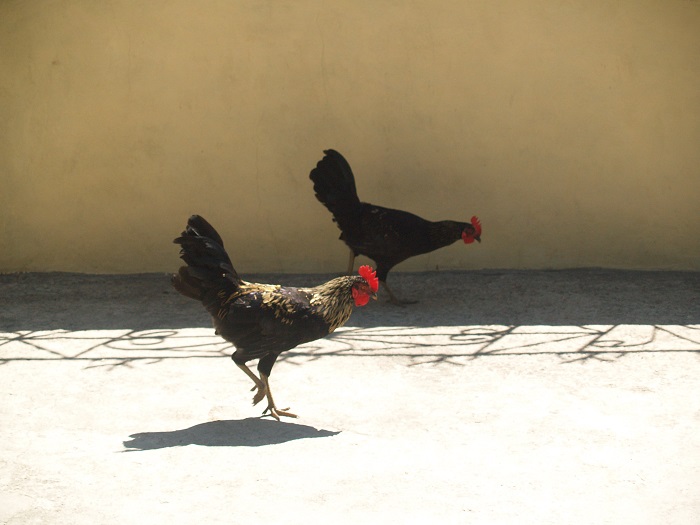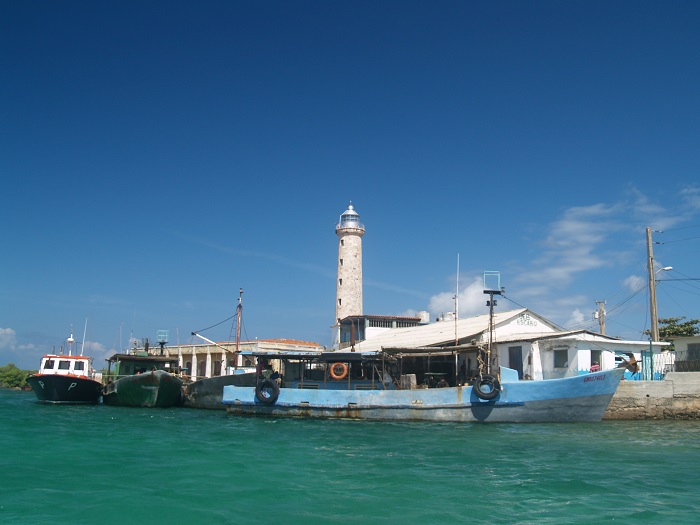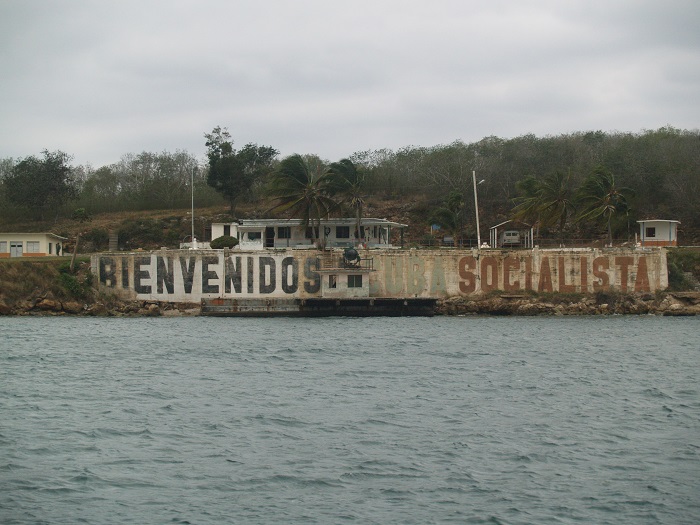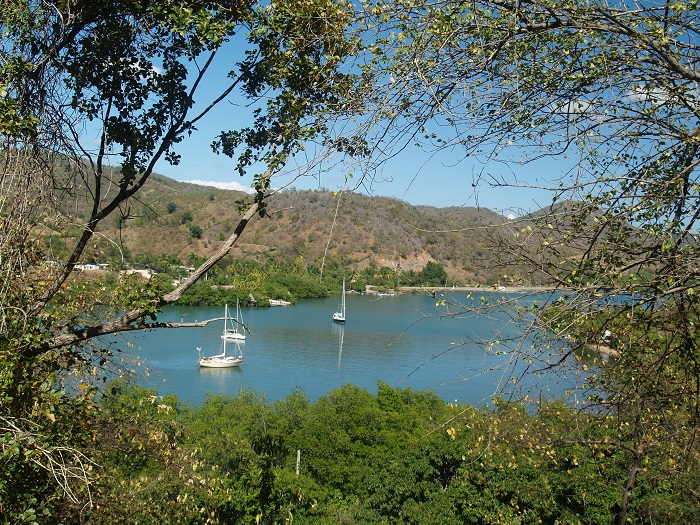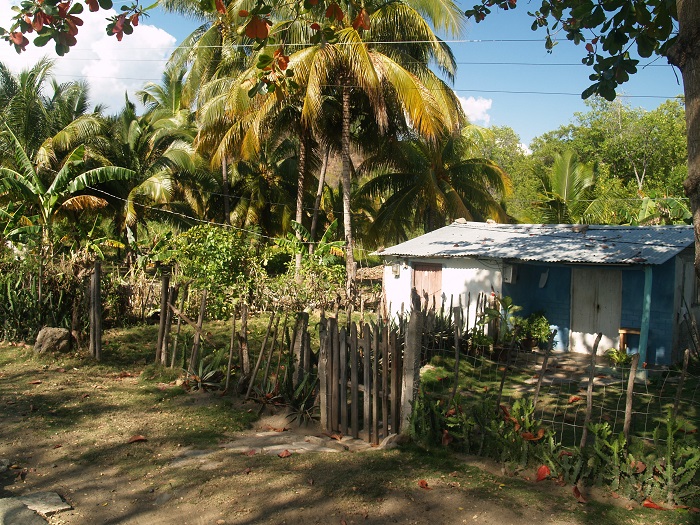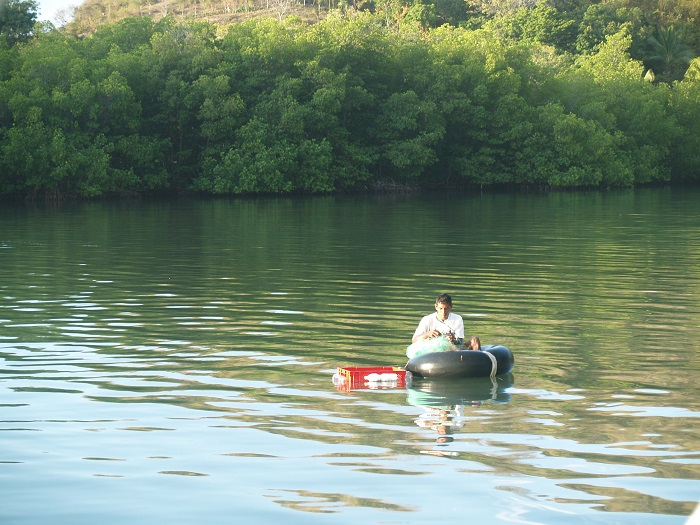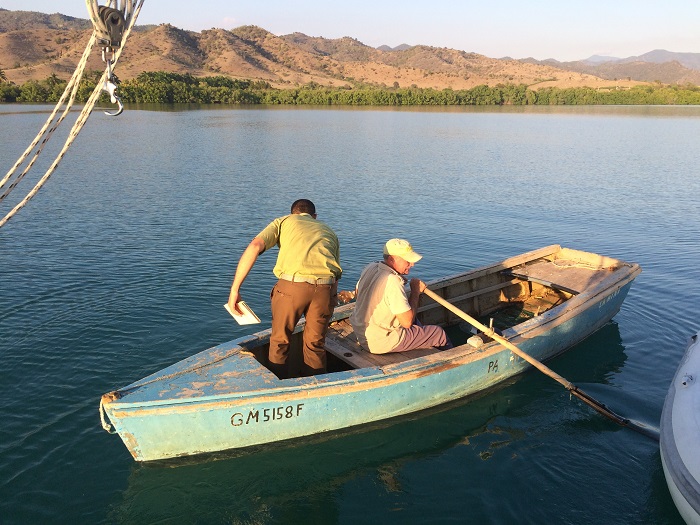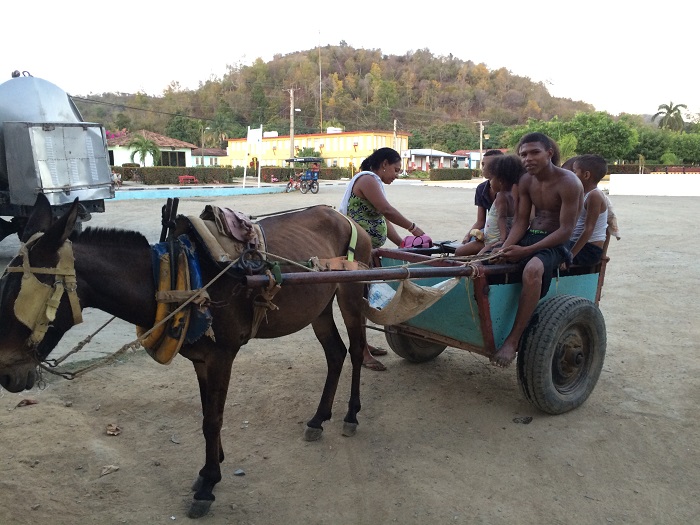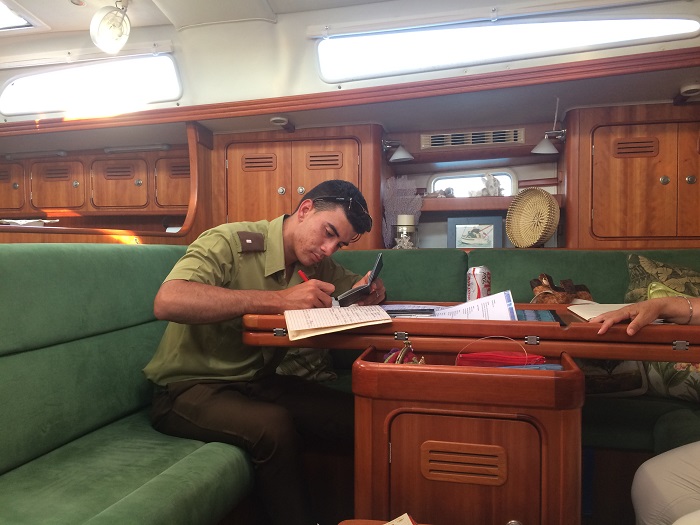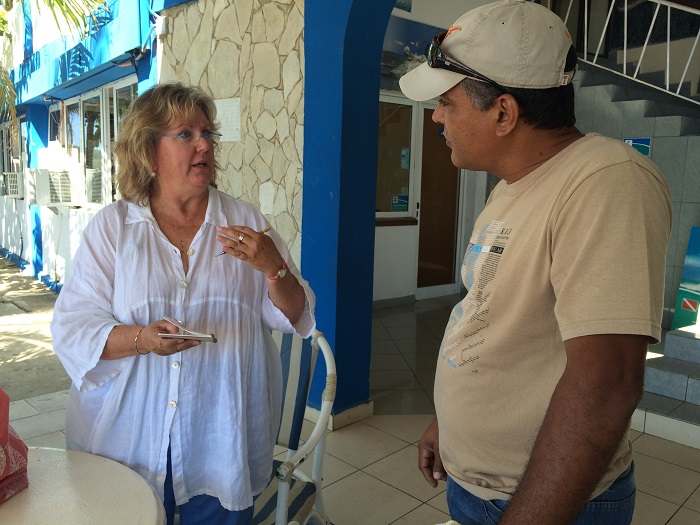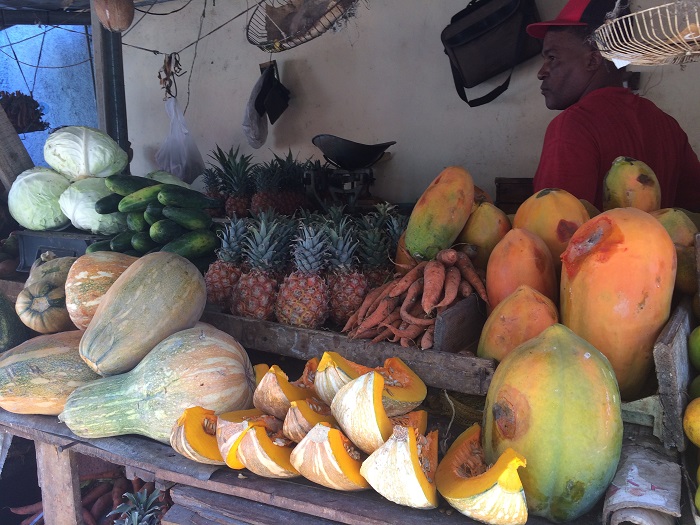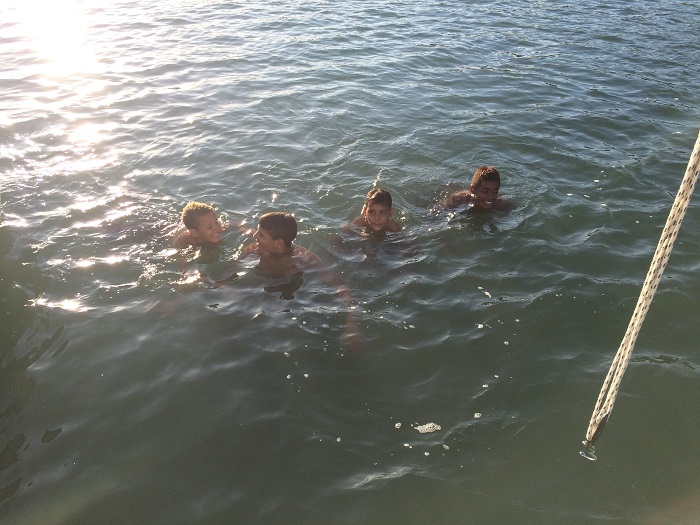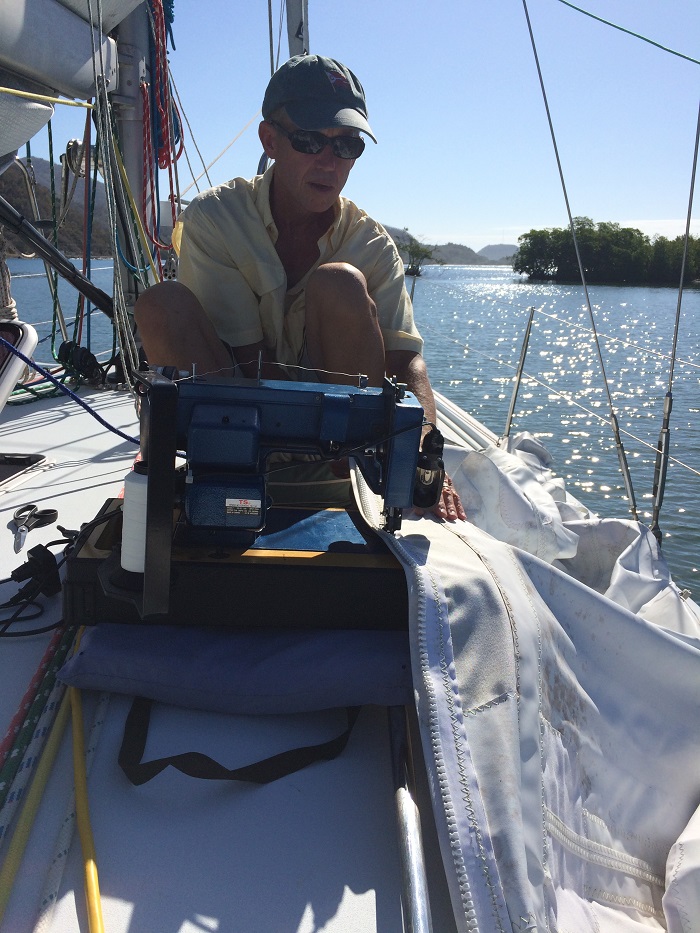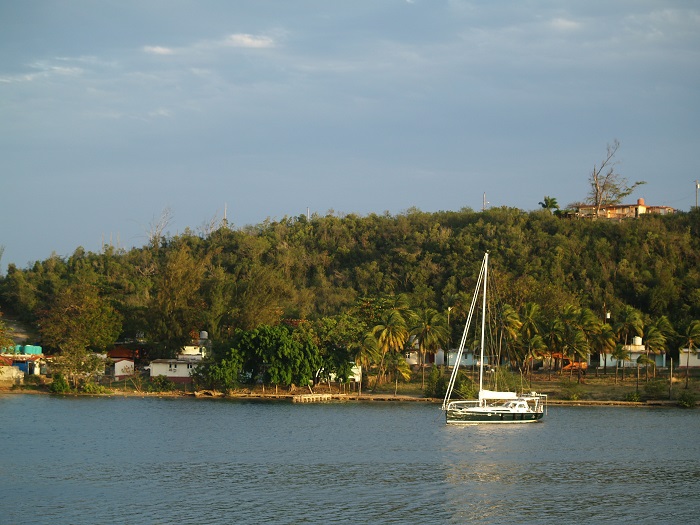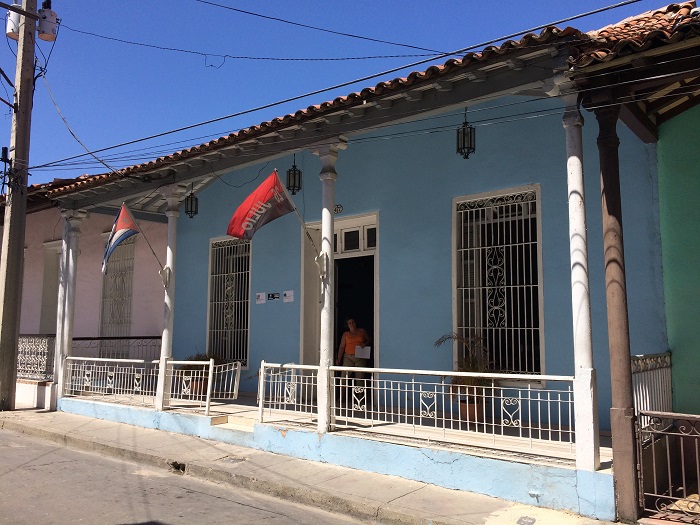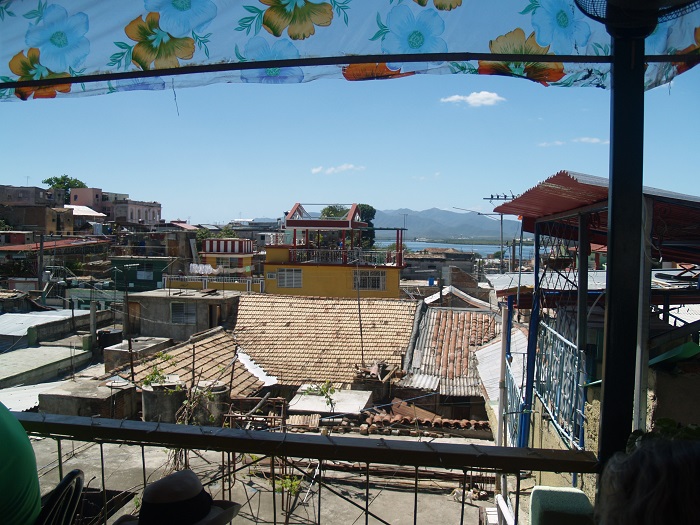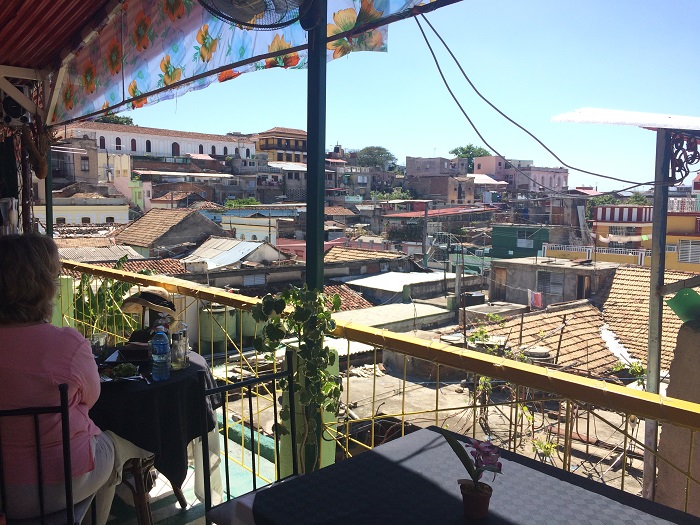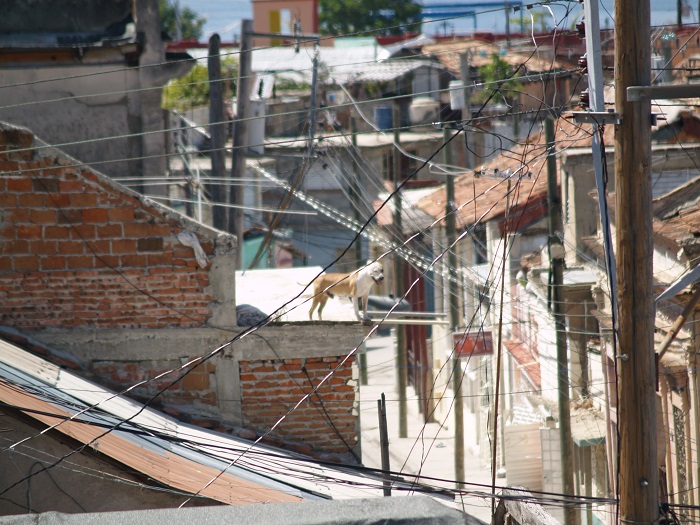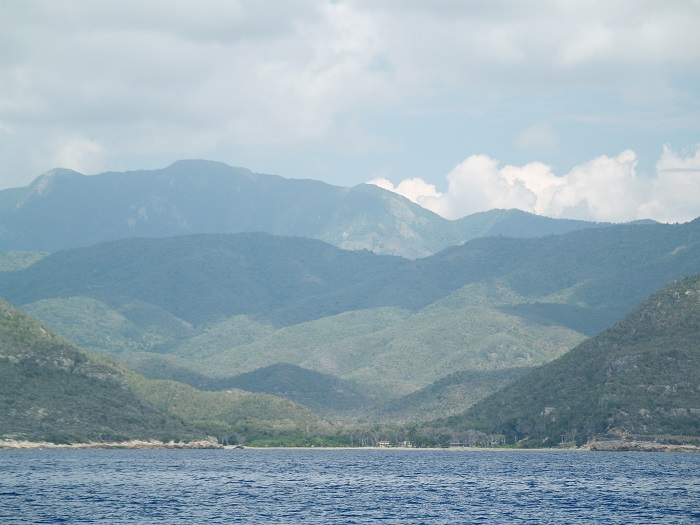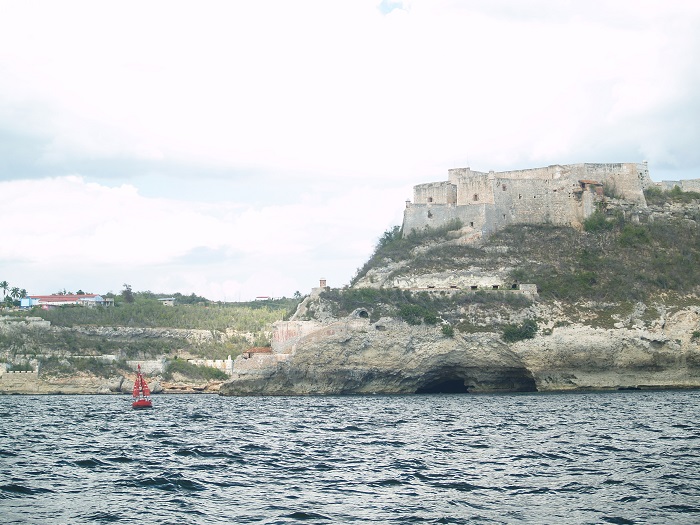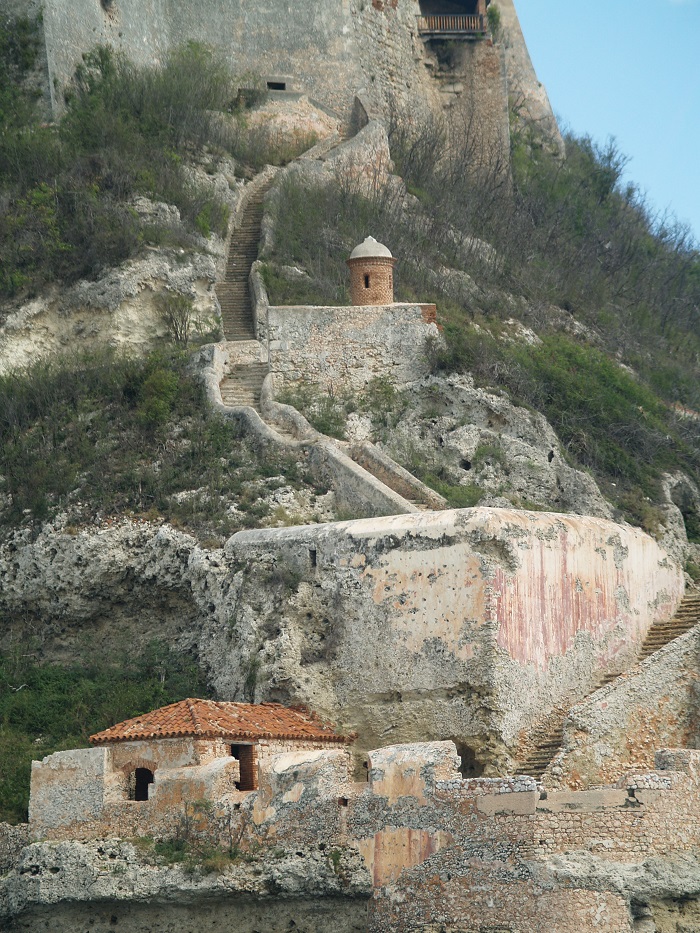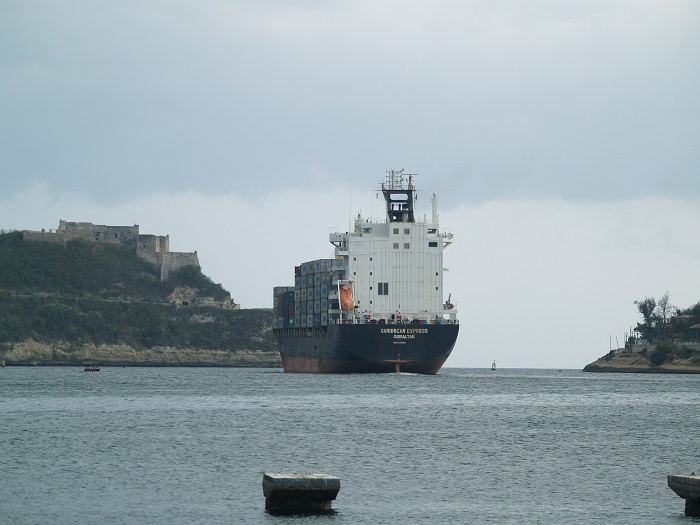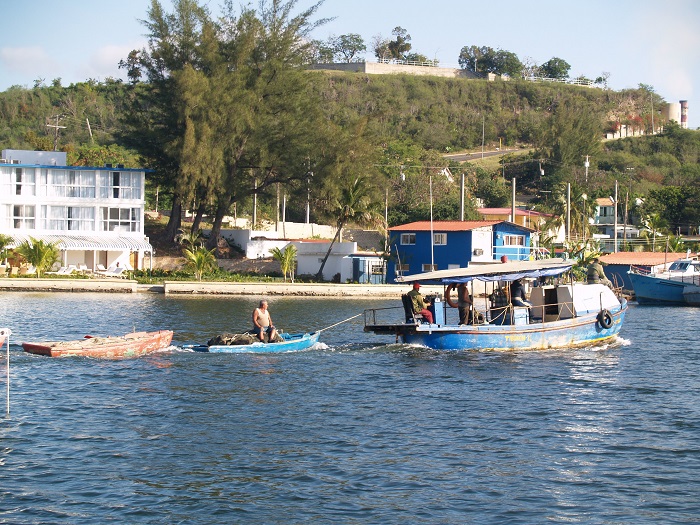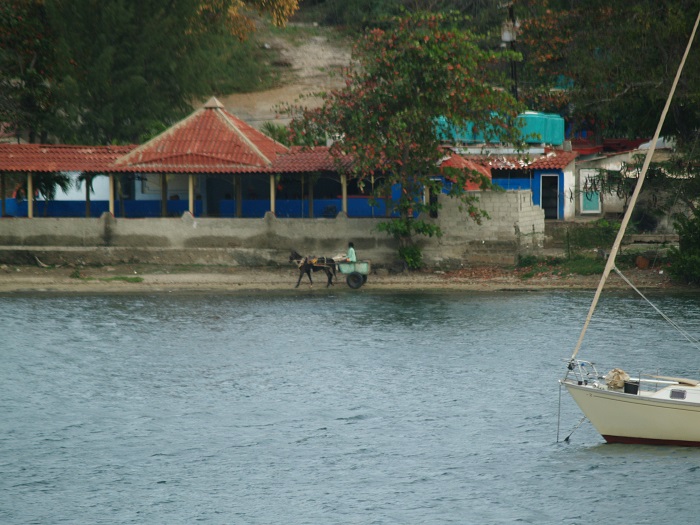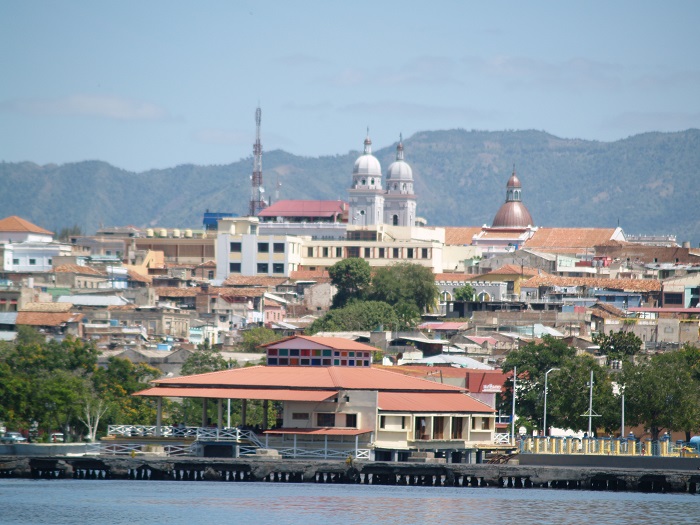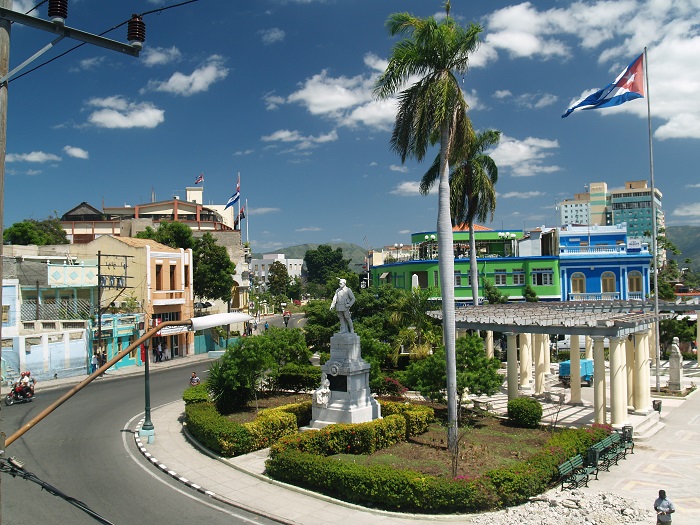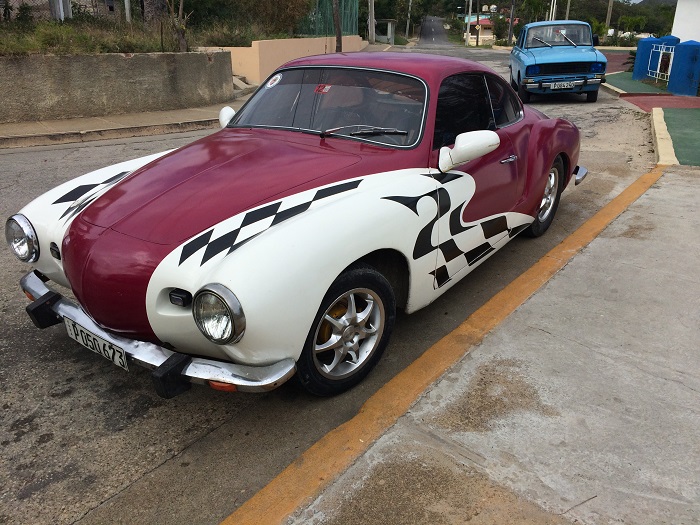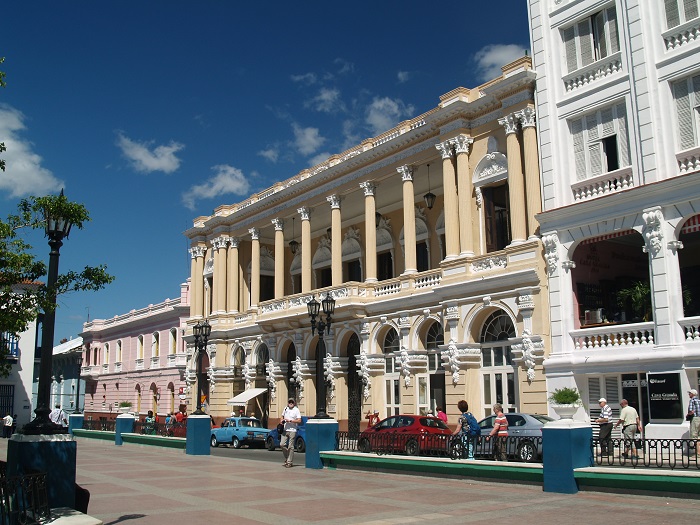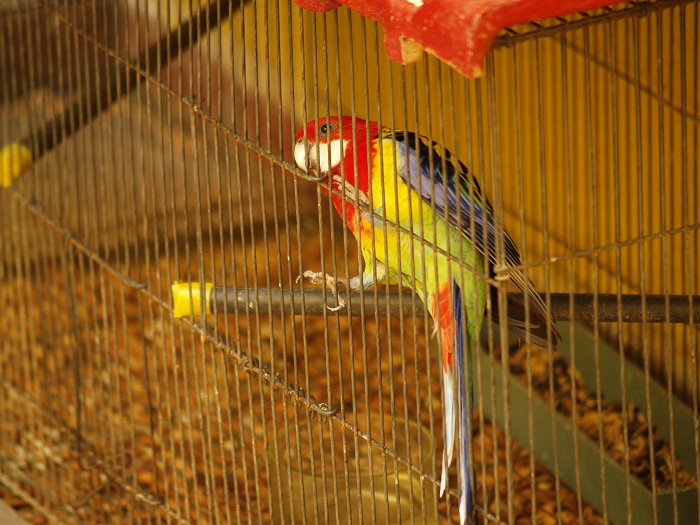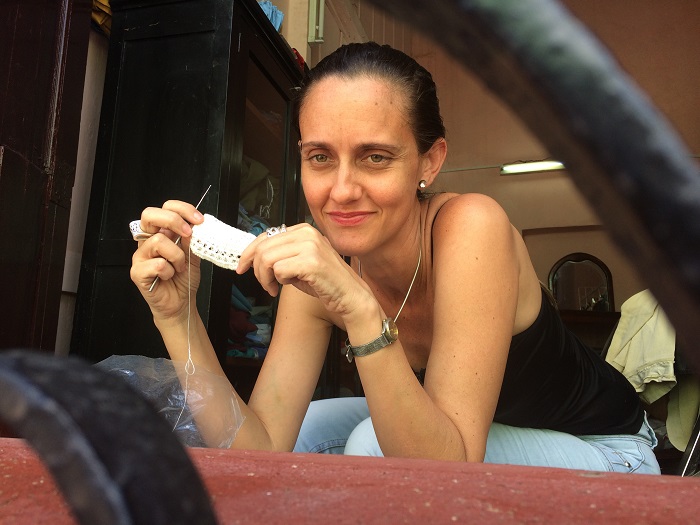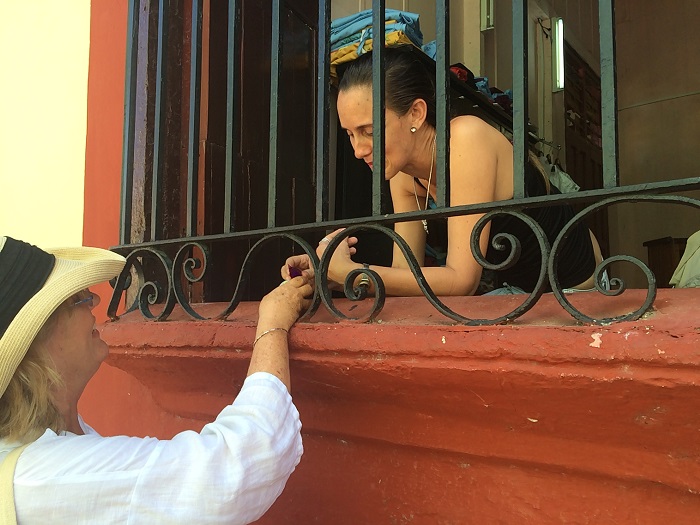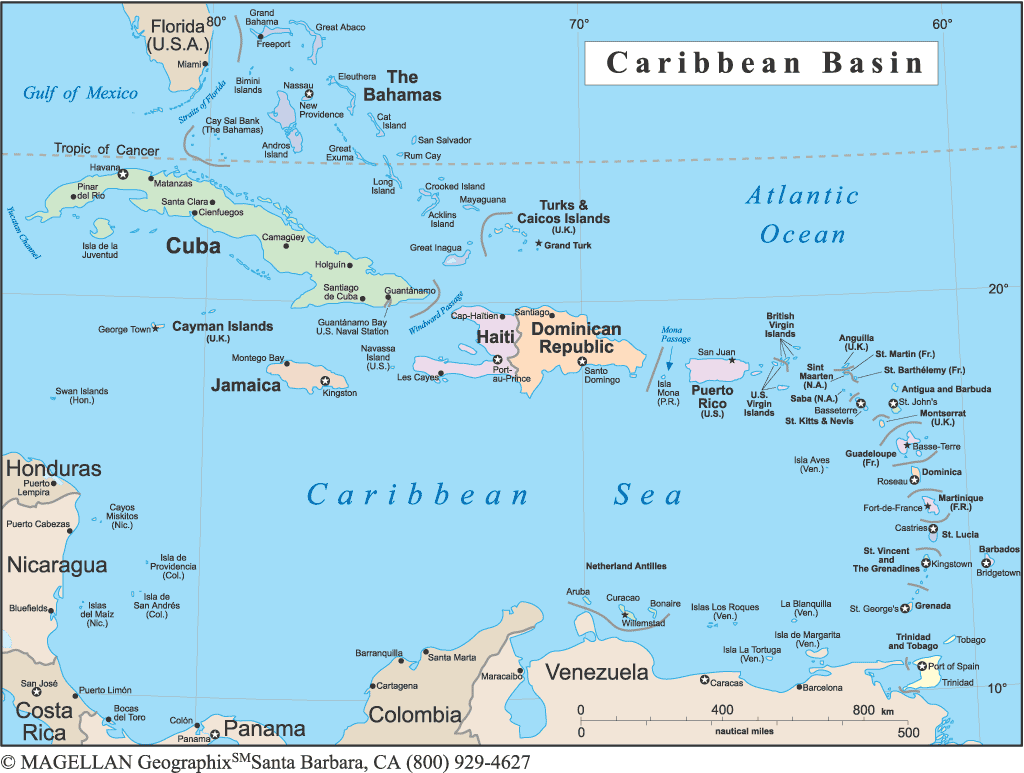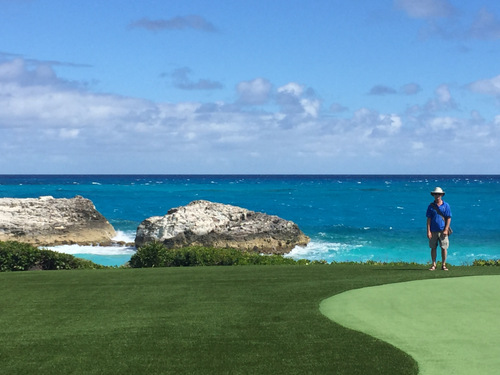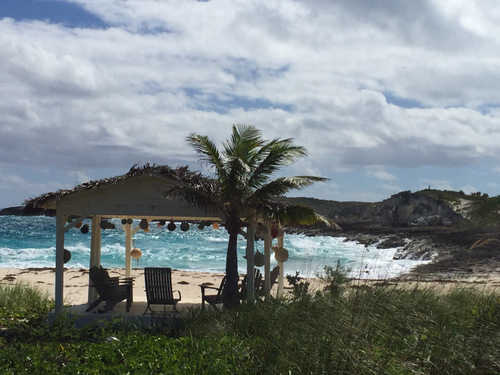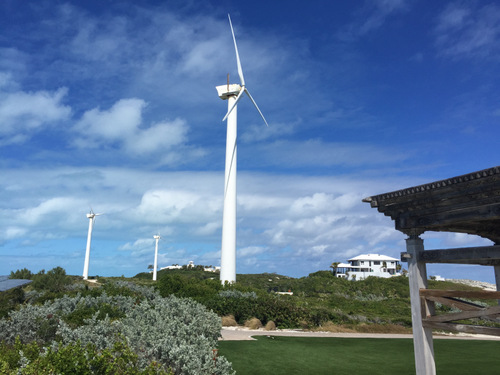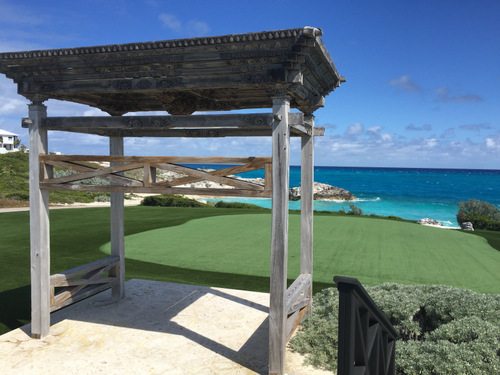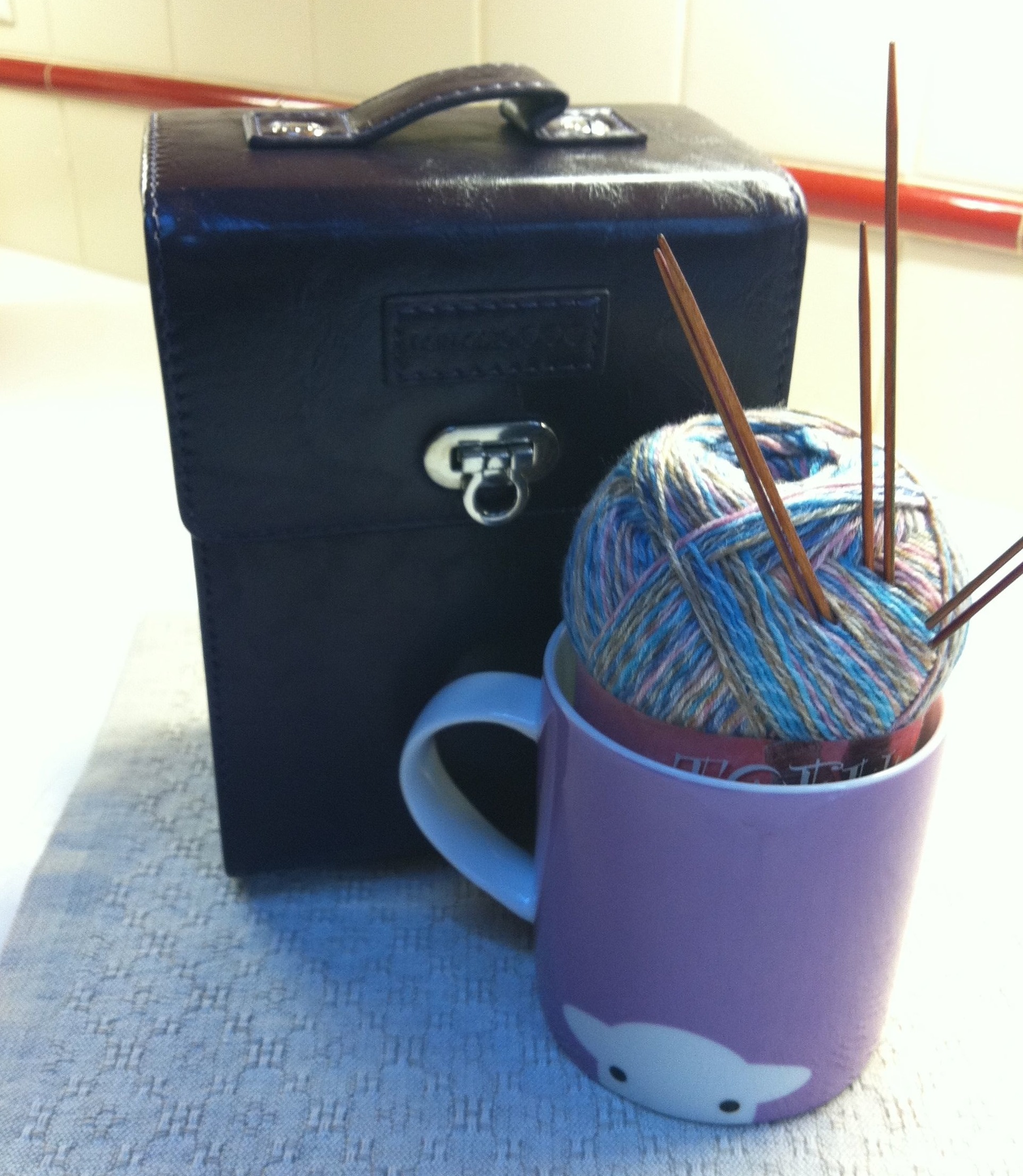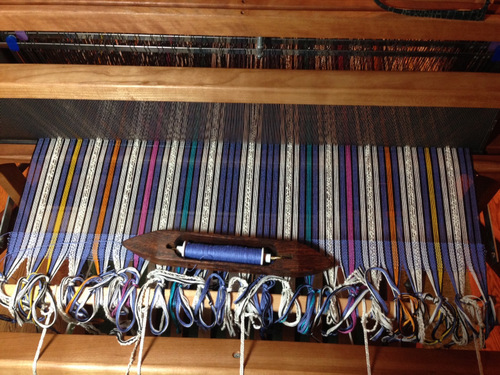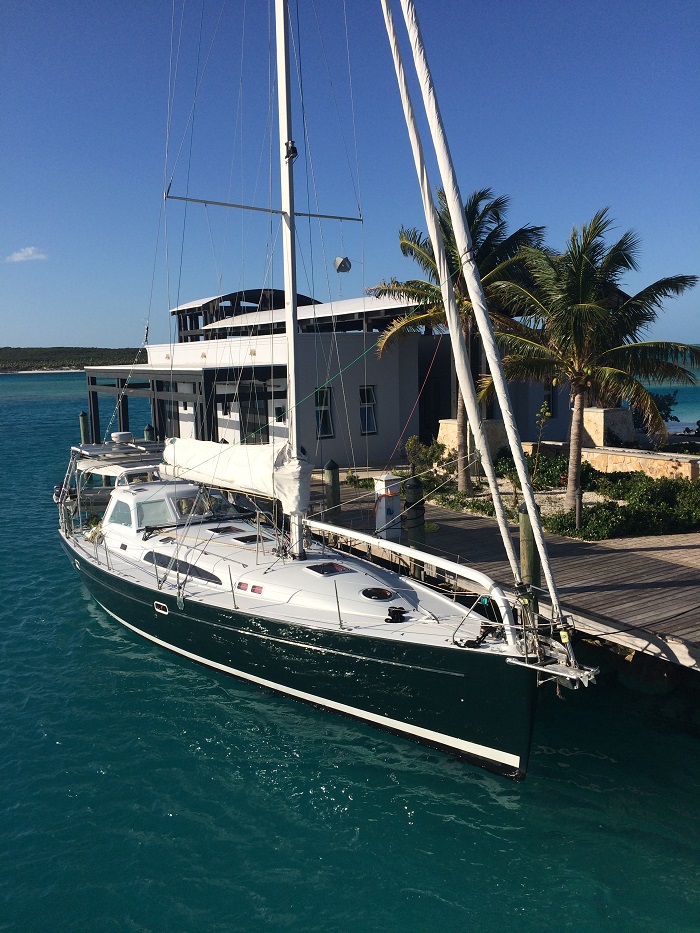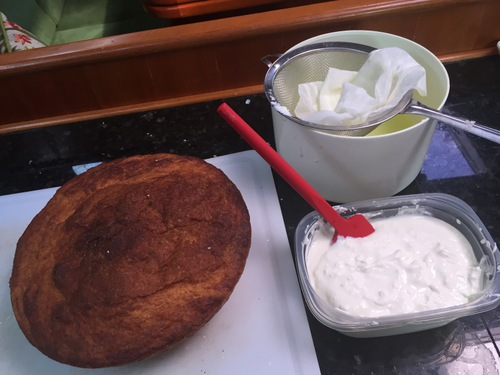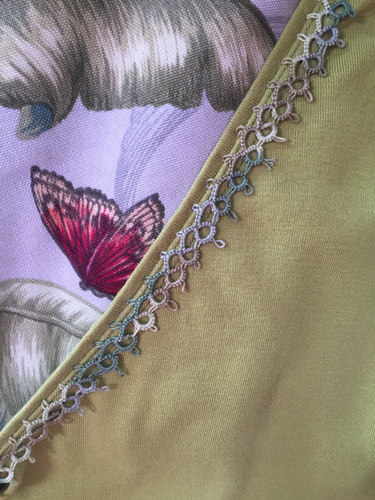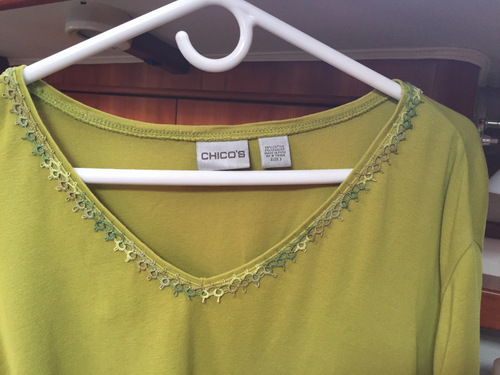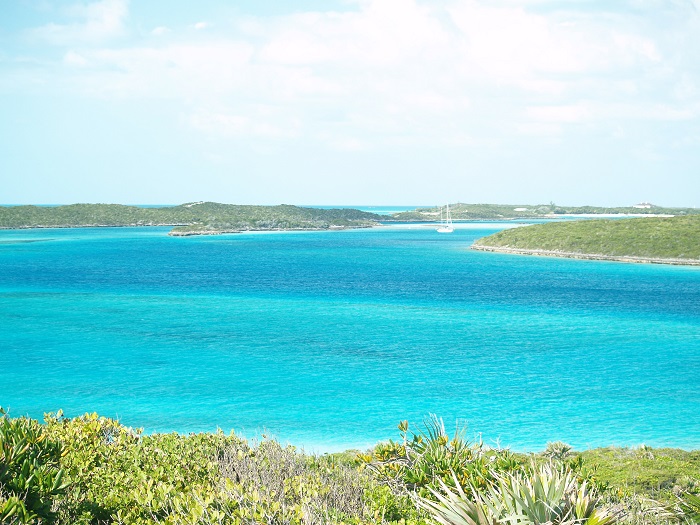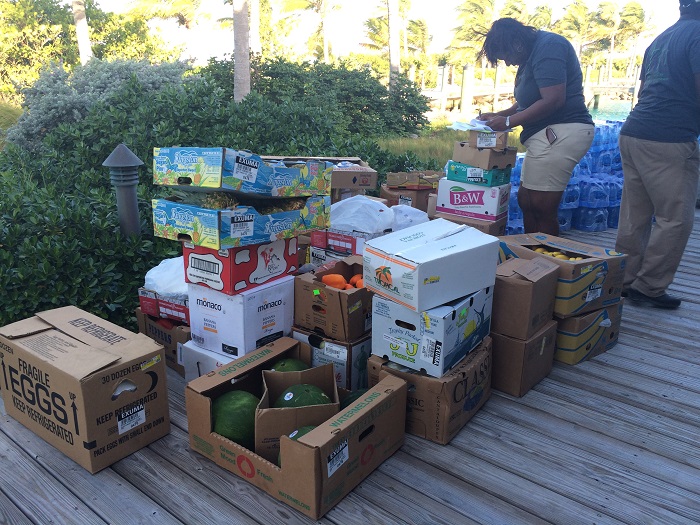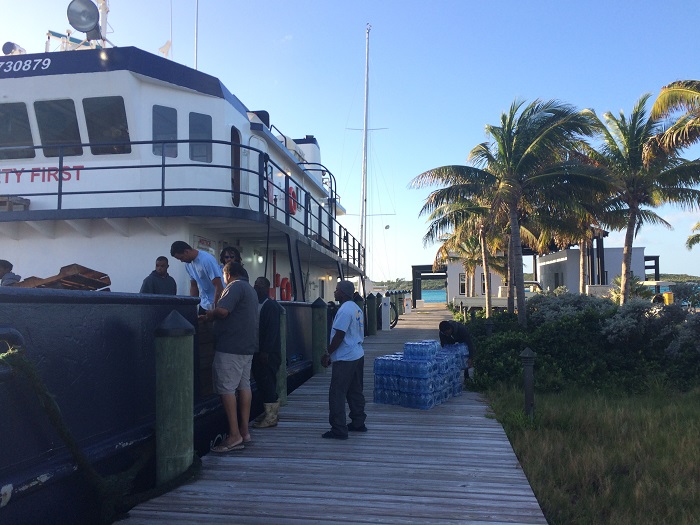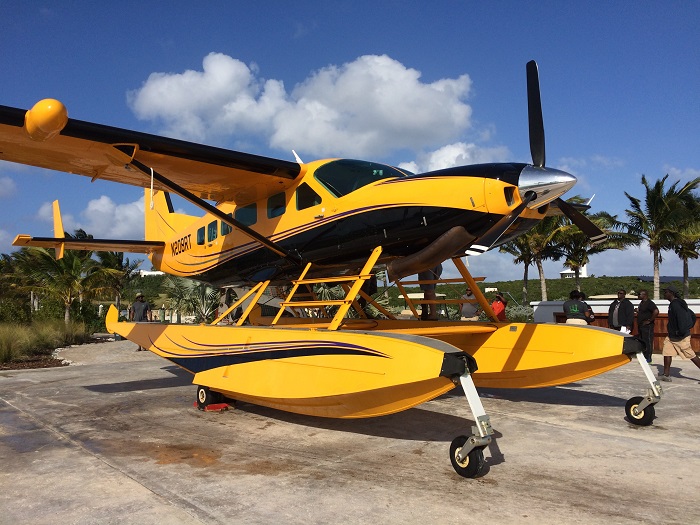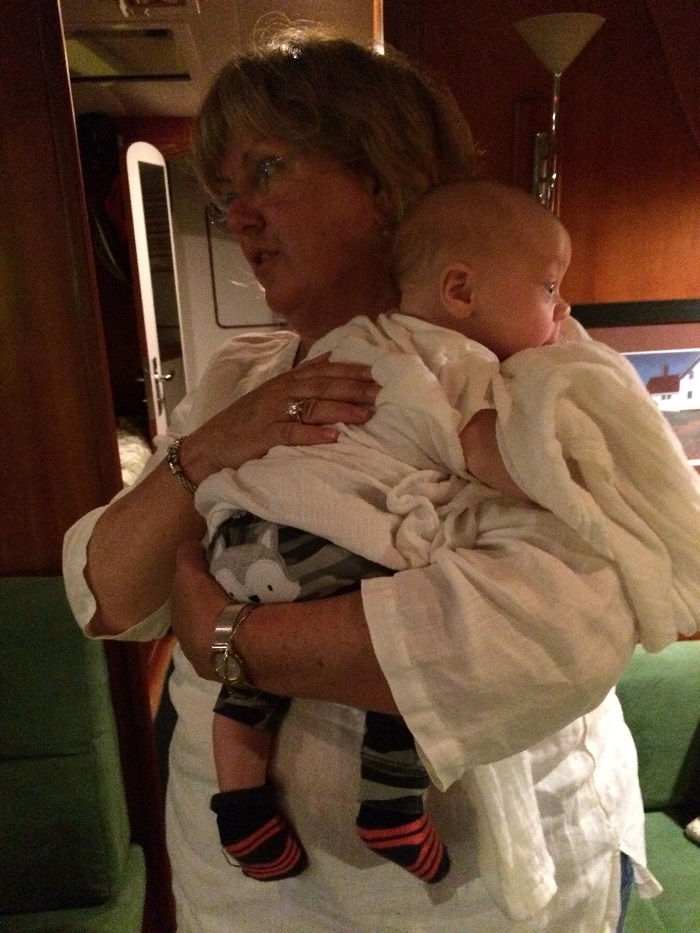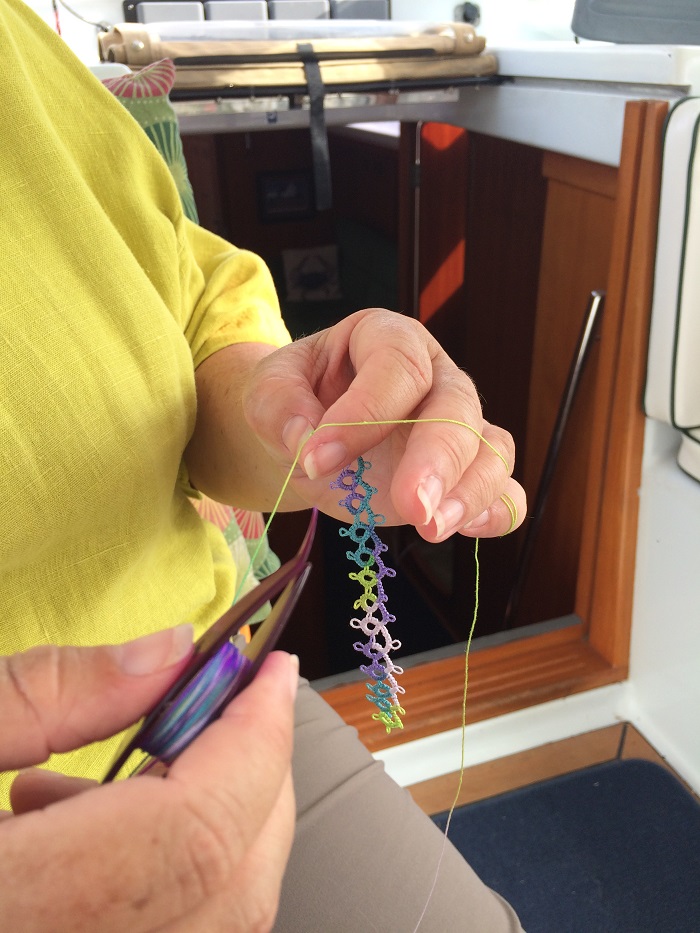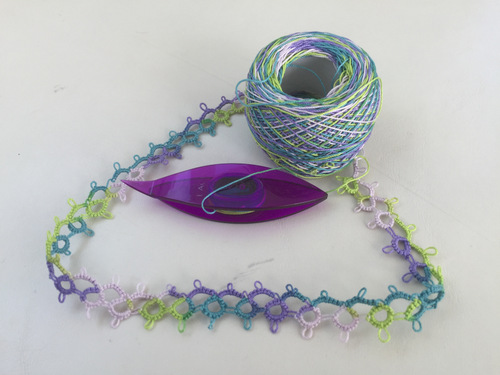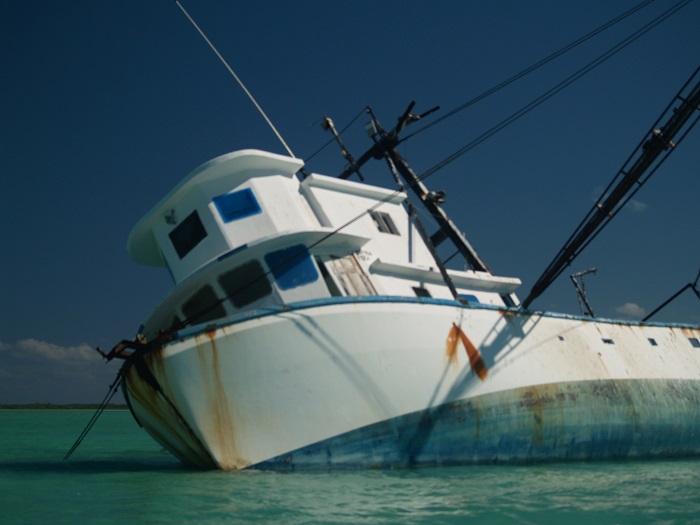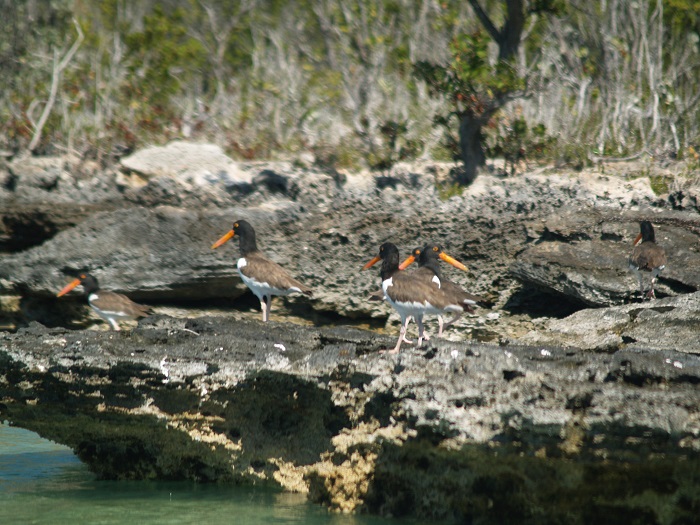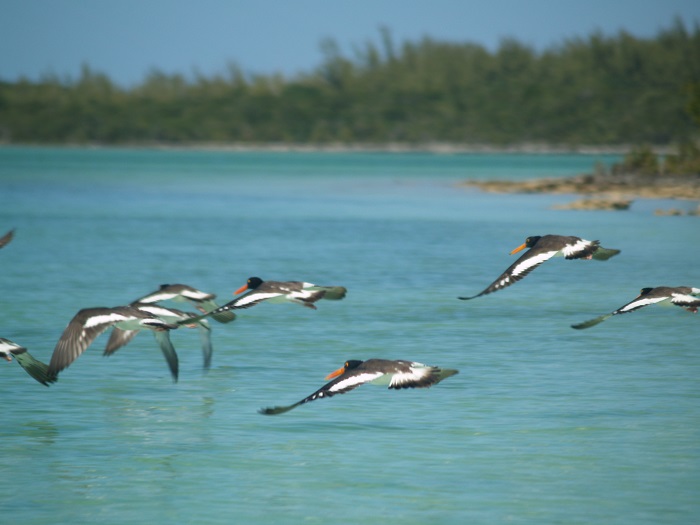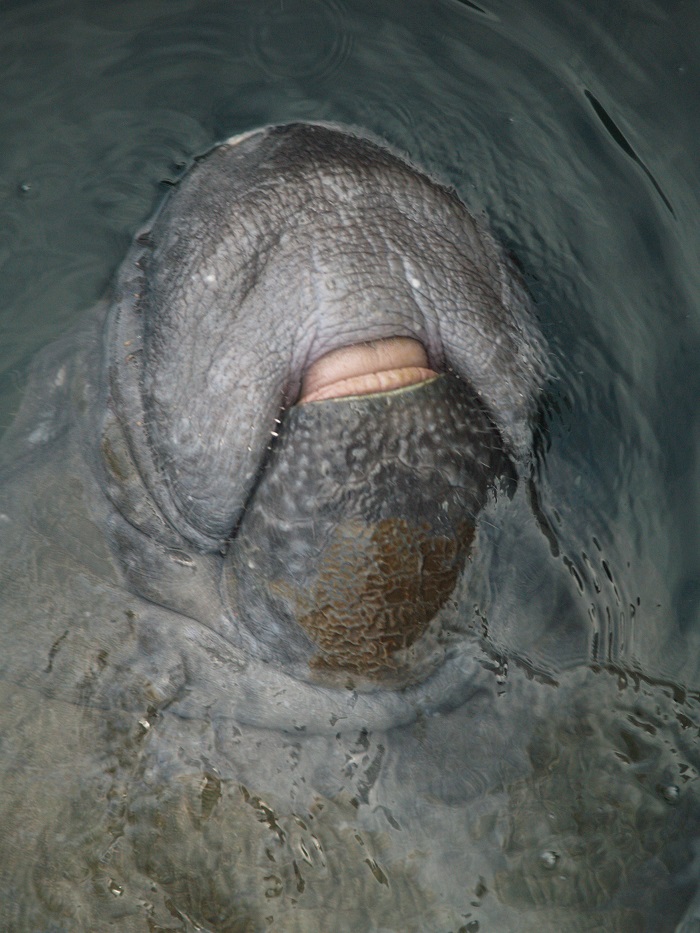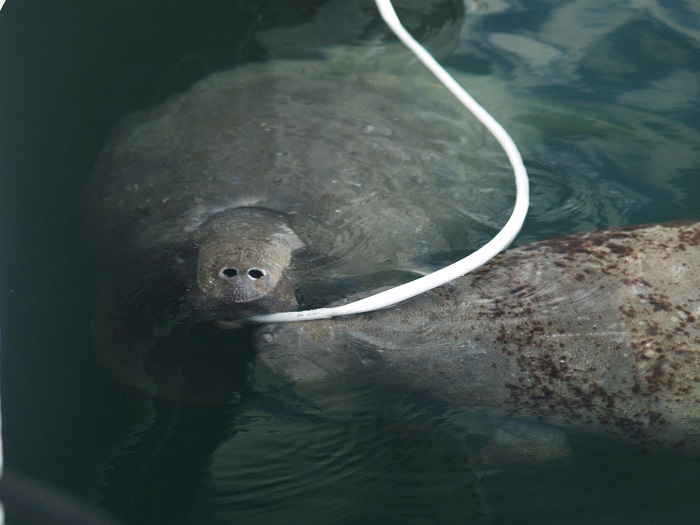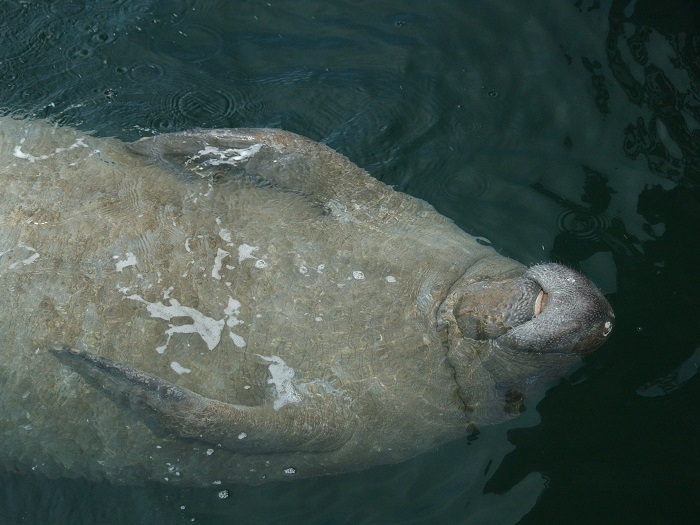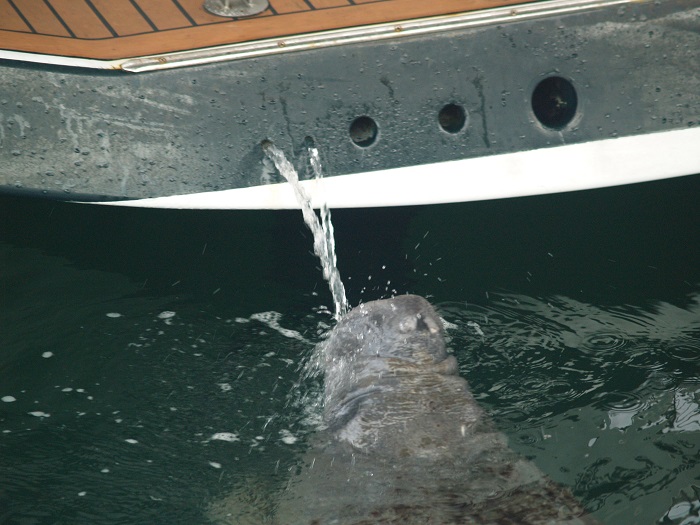We left the small fishing villages of Chivirico and Marea del Portillo several days ago to head further west to the point of the sourthern coast at Cabo Cruz, and then along the island chain of the Jardines.
Marea del Portillo turned out to be quite different from Chivirico, even though I lumped them together as ‘fishing villages.’ Chivirico had a main street with a park on the beach of the Caribbean Sea. When we arrived on a Sunday afternoon the beach was full of locals, and the small restaurant where we ate was doing a steady business of ‘take out’ even though we were the only ones ‘eating in.’ I should explain that ‘take out’ still meant you got your food on a stoneware plate and your drink in a glass. People took their food and drink to their picnic tables or to their beach blanket and returned them when they finished. Across the street from the beach was a little row of three shops, a Mercado where Monday morning I found a pile of ½ lb. bricks of butter in a refrigerated case and no line waiting to buy them up, an all purpose shop with everything from electric rice cookers to clothing for all ages. The last shop was called ‘Cimex,’ and looked like some kind of office like building.
Marea del Portillo was much, much smaller than Chivirico. There was a main road, but it seemed to be a just a bus stop. And buses seemed to stop there every 15 minutes or so it must have have been a main route to somewhere. There was a row of about 3 or 4 houses, but no shops. We went ashore where all the small fishing boats were tied to poles in a line along the brown sandy beach. There was a horse drawn carriage waiting at the beach and we asked the driver which way to town because the beach was at an intersection of three dirt roads. He told us which was to go, and then motioned to the carriage that he would be willing to drive us. How much? One CUC. Okay…
It was a short ride. He dropped us on the main road in front of the little row of houses, and motioned that the entrance to the one where he had just stopped the carriage was a ‘paladar’ with very good food. It was early afternoon and we decided to eat there in the front garden that had a little tiki type roof over a sitting area. The garden was full of bromeliads and bougainvillea and even a large red rose bush in full bloom! Lunch was delicious! I had small shrimp (peeled) served over a pool of lemon, butter and garlic. Perfect!
We have noticed that the salads served throughout our stops in Cuba are among the prettiest concoctions I have ever seen. We have been leery of eating most of them, but they are quite delectable looking. They are all composed salads, and so far none of them have had lettuce. Mostly we’ve seen a little pile of completely white cabbage, shredded and molded into a dome in the middle of the plate. Surrounding this are little composed lumps of other veggies—consisting of canned beets, canned corn, fresh carrots julienned with a little chopped herb on top. Herbs might be sprinkled over the entire plate with a drizzle of beautiful green olive oil. Sometimes there is no drizzle, but in that case a little cruet holder of oil and vinegar will be on the table. For such simple food, and some of it canned, it is a wonderful display.
When I looked deflated about the lack of food shopping in the town, the carriage driver asked me what we were hoping to buy. I answered ‘huevos y cafe,’ eggs and coffee. He made some kind of reply that made me think he would get them for me while we ate lunch. He was back again almost to the moment when we had finished. I swear these towns-people have some line of communication with each other—and it’s not by phone!
Anyway, he did not have the goods but he offered to drive us to the local hotel (outside of town) where we could get internet. We both wanted to post to our blogs so we took a horse drawn carriage to a hotel to get internet. What a contrast! Check out the sights along the route to get to a modern hotel…
The hotel was considerably bigger than the one we’d encountered up on the hill in Chivirico, and it was again geared mostly to Canadians. It looked like a nice place to escape Canadian winters, although quite rustic. The internet was spotty, and it took me more than half and hour on my limited one hour access just to get connected to my website.
And interestingly, again, our driver showed up just as we finished up using the hotel computer. The ride back to the beach where our dinghy was tied up was the most interesting part of the whole day ashore. Along the dirt road that led to the beach were some very modest houses. He stopped in front of one and called out to the woman who lived there with her family.
She came out with a well used cartoon of eggs, 13 in all, and a well used plastic container of ground, very black coffee. We asked how much and she said it was her gift to us. She then asked if we had anything she could use—clothing especially, or shoes…for her kids. Well, I don’t have anything on board for children, but since I saw no children I had no idea anyway what size children she meant. She also sent us with a bag of 8 tomatoes in various stages of ripeness, and sold us a rum bottle full of honey from her bees—for 4 CUC. We felt we’d hit a treasure trove. Back on the boat I dug up what I could to give to her. I hope she can use what I gave her.
And this situation brought up an interesting subject for Bob and me, and generated a long conversation about the value of what she gave us versus what we gave her. I wanted to give her much more than Bob did. We actually had to compromise on what he took back ashore to her. In my mind the value of what she had grown and raised was higher than the value of what we’d bought at Walmart to bring as ‘gifts’ (read tips) to the various officials we’d encounter at each port. In this climate she had worked hard to grow those tomatoes (I haven’t smelled tomatoes with such strong tomato-ness even from my own garden! And they tasted as good as they smelled!), as well as to keep her chickens and keep the bees. Bob, on the other hand, was thinking what it cost us to buy coffee and tomatoes and eggs at home vs. the cost of the t-shirts and the shoes I sent to her (used shoes I might at, but new shirts). I still don’t think that is the way to look at this exchange.
And now I have to add that we have not actually tried the eggs yet, even though we have been out of eggs for some time now and I’ve been craving them. I can’t quite make myself crack one open. I need to face that fear soon. From what we’ve seen, chickens just roam all over the place, and roosters do too. How on earth do they know which eggs are not fertilized? I am quite worried about what I’ll find when I crack an egg, and I’m quite put off by that. Just the though of it has cured my desire for eggs. But we can’t just carry them around for the rest of the trip!
After Marea del Portillo we stopped at Cabo Cruz, with its well known light house used n many guide books. This is the point where the truly southern coast jogs northward a bit.
This is the point where the scooped out portion of the southern coast begins. It’s really running rather northward at this point and is dotted with lots of cays and reefs. The cays are mostly uninhabited. We stopped at two. There are no harbors here. Like the Bahamas, you just anchor in the lee of an island, in this case with a reef to block the Caribbean Sea from bouncing you around too much. These are not calm anchorages like you get in a real harbor, but they are safe enough and very beautiful.
The first cay where we stopped was suggested by Frank Virgintino in his cruising guide to Cuba. Things have certainly changed since he was here last! The cay is a very small island with a coral reef running along one side of it. The entire perimeter of this little cay was surrounded by dead mangroves. It is beautiful in a desolate sort of way, but I know that is not why Frank recommended it in his guide. Bob and I think that a hurricane must have done all this damage here, after Frank’s visit. There were some stunning frigate birds all around us, and a small hawk or falcon perched in a large dead mangrove, and a large osprey. It was a lovely spot, until the sun went down, and then, in spite of being quite far from shore, we were inundated with no-seeums. And I mean inundated.
We put up our screens as soon as we noticed them, and we have very fine screens. But it was too late. Bob fought them off and on until we went to bed, but it wasn’t until the next morning that we realized the extent of the inundation. I am covered in bites everywhere that I didn’t have clothing. And since it was hot I didn’t have much on that night. I wonder when the itching will stop. Right now I can’t quite make it 24 hours on an antihistamine. The next morning we found a blanket of grey on all the ceilings of our cabin, the entire kitchen counter, and in the shower. It had to be 10,000 no-seeums. It took two days to finally win the battle. There are still a handful onboard, but hopefully their life cycle is short.
We spent the next night off another small cay, and we anchored even further from shore. Bob took a quick trip ashore in the early evening after we’d settled in. He found one small open air hut on the island where a single man was living. The island was overrun with iguanas, hermit crabs, and hootias (sp?—the little rodents that are causing such a problem in the Bahamas’ Land and Sea Park). The man in the shack with no walls runs a snack bar on this island, but I’d like to know who could possibly imagine eating something cooked by a man who doesn’t seem to have had a shower in decades and lives with nothing but the fresh water he can collect and the amount of electricity he can generate from the solar panels on his roof. No thank you!
This morning we awoke in the next big town of our journey: Cienfuegos. It is a beautiful city! It was built much later than Santiago de Cuba, and has mostly Victorian looking buildings that we can see from the shore. The ‘yacht club’ is an amazing Victorian mansion that I’m looking forward to visiting as soon as we go ashore. It is a short walk to downtown Cienfuegos. We’ll head in shortly.
It was a long day getting here yesterday. Chris Parker predicted a cold front with very strong northwest winds that would arrive late yesterday, but it arrived a good 12 hours earlier and so made for a very rough passage to windward. The wind was sustained in the high 20s (mph) with gusts over 30 mps on a regular basis. I was quite seasick most of the day. It took us about 8 hours to get there and I was so thankful to get into a calm harbor!
This is the sign that greets you as you enter the harbor. Welcome to Socialist Cuba! Can you see the big search light just in front of the word “Cuba?” Quite cold war looking…
Luna, whom we last saw in Chivirico, arrived last evening, at dusk. I know Lars is going to leave his boat here and take a bus up to Havana to see the Stones concert. I have thought and thought how we might do the same—in a civilized manner! Lars is not nearly as concerned with creature comforts as I am! I would love to see President Obama even more than the Stones, but I don’t think there is a solution! I want to take an air conditioned vehicle (not possible), and then stay in a 4-star hotel in Havana (also not possible with no internet to find one and little likelihood of one having rooms at this point since there are very few of them). I can’t believe we are here at such an auspicious time, with no way to get our own boat there in time.

Sailing is such a slow mode of transportation! But I’ve just learned that the Stones concert has been postponed in order not to conflict with Obama’s visit. This is probably old news to anyone reading this because you certainly have more access to news than we do!

